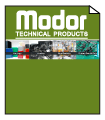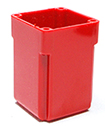Though thermoset plastics and thermoplastics sound similar, they have very different properties and applications. Understanding the performance differences can help you make better sourcing decisions and improve your product designs.
The primary physical difference is that thermoplastics can be remelted back into a liquid, whereas thermoset plastics always remain in a permanent solid state. Think of thermoplastics as butter – butter can be melted and cooled multiple times to form various shapes. Thermoset is similar to bread in that once the final state is achieved, any additional heat would lead to charring.
Thermoset
Thermoplastics
Thermoset Curing Process
Thermoset plastics contain polymers that cross-link together during the curing process to form an irreversible chemical bond. The cross-linking process eliminates the risk of the product remelting when heat is applied, making thermosets ideal for high-heat applications such as electronics and appliances.
Thermoplastics Curing Process
Thermoplastics pellets soften when heated and become more fluid as additional heat is applied. The curing process is completely reversible as no chemical bonding takes place. This characteristic allows thermoplastics to be remolded and recycled without negatively affecting the material’s physical properties.
Features & Benefits
Thermoset plastics significantly improve the material’s mechanical properties, providing enhances chemical resistance, heat resistance and structural integrity. Thermoset plastics are often used for sealed products due to their resistance to deformation.
Features & Benefits
There are multiple thermoplastic resins that offer various performance benefits, but most materials commonly offer high strength, shrink-resistance and easy bendability. Depending on the resin, thermoplastics can serve low-stress applications such as plastic bags or high-stress mechanical parts.
Pros
- More resistant to high temperatures than thermoplastics
- Highly flexible design
- Thick to thin wall capabilities
- Excellent aesthetic appearance
- High levels of dimensional stability
- Cost-effective
Pros
- Highly recyclable
- Aesthetically-superior finishes
- High-impact resistance
- Remolding/reshaping capabilities
- Chemical resistant
- Hard crystalline or rubbery surface options
- Eco-friendly manufacturing
Cons
- Cannot be recycled
- More difficult to surface finish
- Cannot be remolded or reshaped
Cons
- Generally more expensive than thermoset
- Can melt if heated


